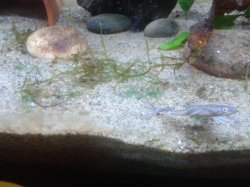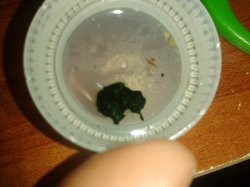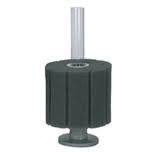I am getting a bit confused from the last few posts, so permit me to see if I can sort this out.
First, cyanobacteria. I assume this is what some are referring to by BGA (= blue green algae). I do not think what is showing on the substrate in the photo is cyanobacteria; it is more likely common green algae. This is a light/nutrient issue. I checked your other thread on the frog, and no mention was made there of the light so I do not know what you have over this 10g, but I would either decrease the intensity, duration, or provide shade as with floating plants. Any one of these might be sufficient, depending upon the light intensity.
Second, still on cyanobacteria. This is caused by organics in the presence of light. Organics can be increased by any one or more of several factors: increased fish food; increased fish load; increased plant fertilizers; insufficient water changes; insufficient substrate cleaning. Increasing the light, or having too bright a light over the tank, coupled with one of these can cause cyanobacteria. Blackouts can obviously clear it, but it will probably return if the organic issue is not resolved.
Water flow is not a direct cause, and may not be relevant at all. I have tanks with minimum flow, and even had one 10g with no filter for a year, but I never saw cyano.
Low nitrates is also not a cause. Organics usually result in higher nitrates, though not always. And from the data in the other thread, nitrates are stated as 5 to 20. This is quite a range...what test are you using? But aside from that, nitrates at 20 ppm would suggest organics may be high, and while this can feed cyano it can also feed algae.
So that brings us back to the issue here, which I think from the photo is green algae. Light may be too intense, plus reduce the nitrates which can be too much feeding or plant nutrients.
Byron.

 /www.fishforums.net/index.php?/topic/435706-one-of-my-african-dwarf-frogs-died/
/www.fishforums.net/index.php?/topic/435706-one-of-my-african-dwarf-frogs-died/
 /www.fishforums.net/index.php?/topic/435706-one-of-my-african-dwarf-frogs-died/
/www.fishforums.net/index.php?/topic/435706-one-of-my-african-dwarf-frogs-died/


